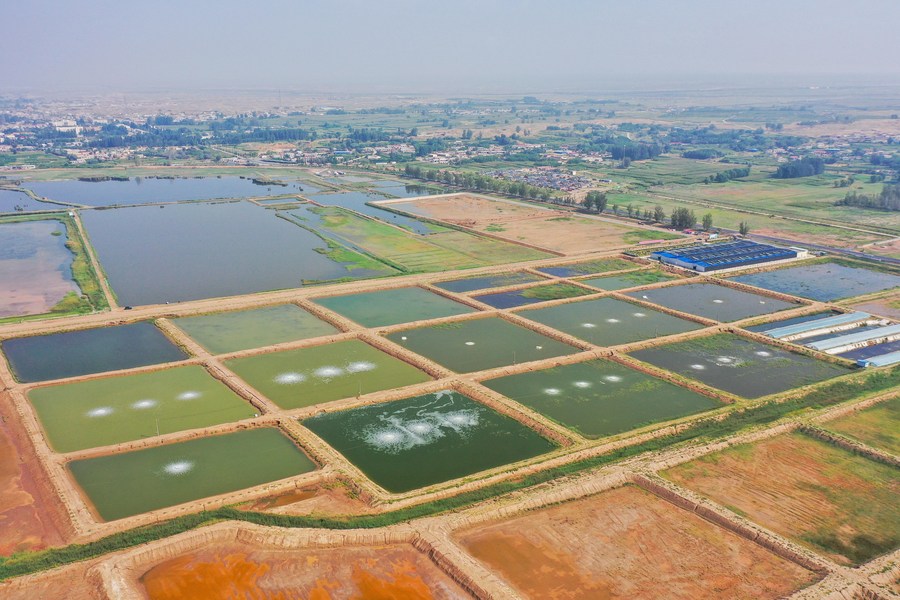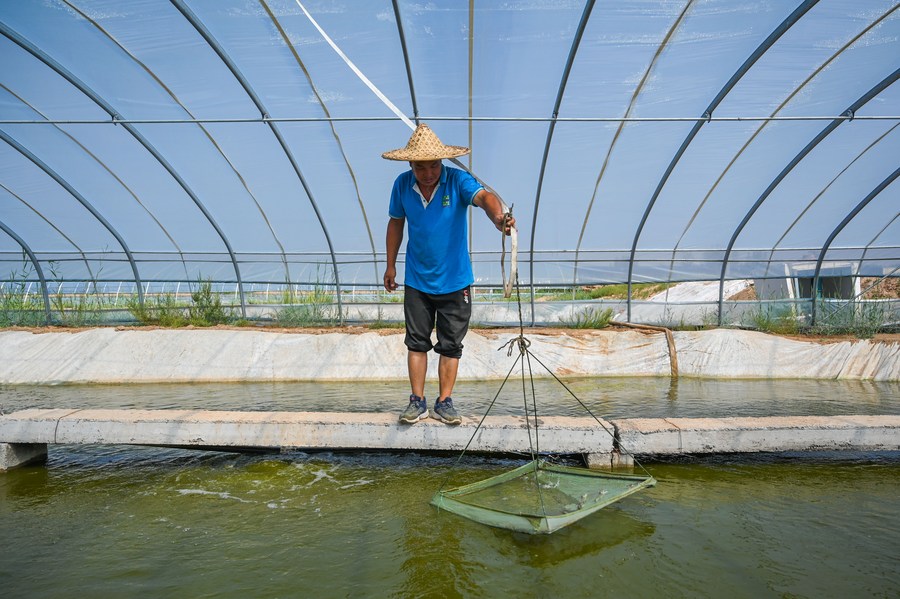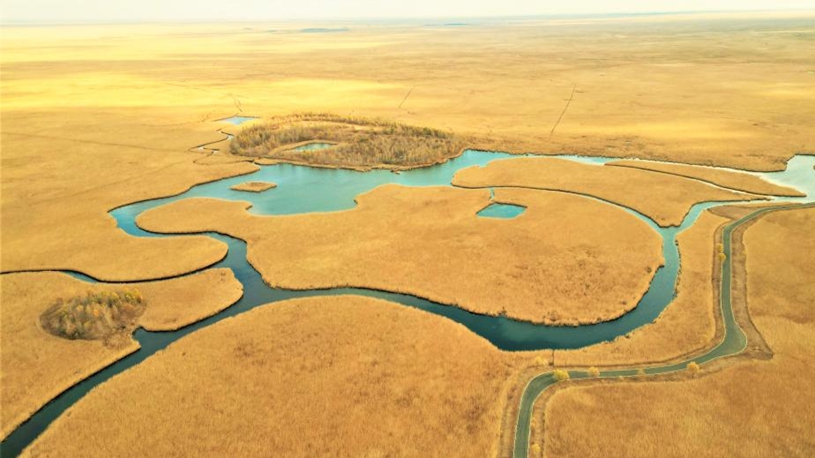
This aerial photo taken on Aug. 25, 2022 shows a general view of shrimp ponds in north China's Inner Mongolia Autonomous Region. (Xinhua/Liu Lei)
HOHHOT, Nov. 1 (Xinhua) -- Wang Changgui, an aquaculturist from Ordos City in north China's Inner Mongolia Autonomous Region, had a successful yield from shrimp farming this year.
Thanks to the local sci-tech expert, shrimp farming has turned out to be a lucrative source of income.
Ordos is located in the western part of Inner Mongolia, where there is a vast tract of saline soil. Dispatched by Ordos agriculture and animal husbandry bureau, Wu Tao started to work as a sci-tech expert in 2017. He found out that high salinity in the soil could be beneficial to shrimp farming.
Wu has distinct memories of the challenges he encountered. The shrimp seedlings had to be desalinated for 10 days before their salinity level could match that of the local water. The seedlings were then raised for an additional 20 to 30 days in the greenhouse before being transferred to outdoor ponds.

A farmer shows shrimps fed in a pond in north China's Inner Mongolia Autonomous Region, Aug. 25, 2022. (Xinhua/Liu Lei)
Local villagers have been engaged in shrimp farming for the past few years. The Hangjin League, where Wu works, targets an annual shrimp output of more than 250 tonnes this year, with total revenue of 15 million yuan (about 2.1 million U.S. dollars).
Shrimp farming also contributes to the surrounding ecology in positive ways. Zhu Changbo, a researcher from the South China Sea Fisheries Research Institute under the Chinese Academy of Fishery Sciences, said that there is little rainfall and strong sunshine in desert areas, and the groundwater brings a large amount of salt to the surface during evaporation.
Fewer plants will be able to survive as salinization increases, and the surface soil will eventually become sand, he explained.

A farmer works at a shrimp pond in north China's Inner Mongolia Autonomous Region, Aug. 25, 2022. (Xinhua/Liu Lei)
In the saline and alkaline areas along the Yellow River in Inner Mongolia, farmers usually soak the land with the Yellow River water to remove the surface salt, and then the saline water will be discharged through the drainage canal. So, a large amount of saline water resources are wasted every year.
Zhu added that the pond water used for shrimp farming can make use of saline water. Shrimp harvest is equivalent to directly taking away a large amount of salt from the water. The existence of pond water raises the groundwater level, which is beneficial for the growth of plants and soil fixation to avoid desertification.
Experts hope to make saline water fishery into a unique part of desert management, building a "fishery oasis" in the desert.
China has sent nearly 300,000 sci-tech experts to rural areas as part of poverty alleviation efforts since 2012, according to the Ministry of Science and Technology.
The objective of sending such experts to rural areas is to popularize agricultural science and technology, foster the spirit of sci-tech innovation and entrepreneurship, bolster poverty eradication efforts, and promote rural vitalization. ■












